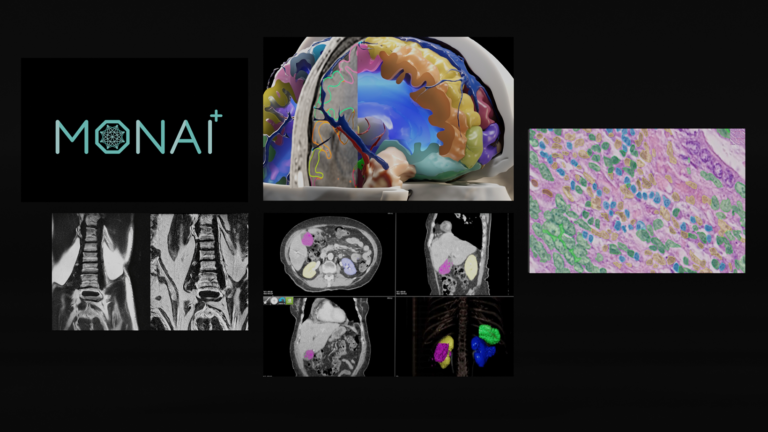
MONAI, the domain-specific, open-source medical imaging AI framework that drives research breakthroughs and accelerates AI into clinical impact, has now been…
MONAI, the domain-specific, open-source medical imaging AI framework that drives research breakthroughs and accelerates AI into clinical impact, has now been downloaded by over 1M data scientists, developers, researchers, and clinicians. The 1M mark represents a major milestone for the medical open network for AI, which has powered numerous research breakthroughs and introduced new developer tools in the last year.
The most notable is Auto3DSeg, a low-code framework. It enables data scientists and researchers of any skill to train models that can quickly segment regions of interest in 3D imaging modalities like CT and MRI. Researchers in the MONAI community finished atop the leaderboard using Auto3DSeg in numerous segmentation competitions like the MICCAI INSTANCE22 and HECKTOR22 challenges.
Swin-UNETR, another research breakthrough from the MONAI community, was published in CVPR with authors from Vanderbilt University and NVIDIA. Swim-UNETR is a state-of-the-art, 3D transformer-based model with self-supervised pretraining.
Over 700 GitHub projects are based on MONAI today. With the release of MONAI 1.0 in September 2022, you can now access 21 of the leading medical imaging models for tasks such as MRI segmentation, breast-density classification, and pathology tumor detection in MONAI Model Zoo.
Last year, MONAI Label expanded into the field of pathology. New features, sample applications, and viewer integrations for annotating pathology images create a starting point for pathologists and data scientists to work together to use the benefits of deep learning.
“MONAI will enable pathologists and scientists to build accurate models without knowing anything about AI. This is an important step in making AI a universal tool for pathology research,” said Lee A.D. Cooper, PhD, associate professor of pathology and director, Computational Pathology at the Northwestern University Feinberg School of Medicine.
Video 1. Pathology Image Labeling Comes to MONAI
Deploying AI in clinics with MONAI, supported in every cloud
Numerous healthcare institutions, academic medical centers, and AI startups around the world have begun using MONAI Application Packages (MAPs) to deploy in clinical settings. These include Cincinnati Children’s Hospital, National Health Service England, Qure.ai, SimBioSys, and the University of California, San Francisco.
With MONAI Deploy, you can take one or more trained models and build an application with a few lines of code in under 20 minutes.
MAPs were designed using cloud-native technologies and are supported by leading cloud service providers:
- Amazon HealthLake Imaging
- Google Cloud
- Nuance Precision Imaging Network powered by Microsoft Azure
- Oracle Cloud Infrastructure
New frontiers with generative AI
Generative AI is a powerful technique that can create new data similar to existing data. In medical imaging, generative AI can be incredibly valuable in creating synthetic images to augment limited datasets while preserving patient privacy.
By combining the power of generative AI with the capabilities of MONAI, researchers and developers can unlock new opportunities for innovation in medical imaging for medical device companies, pharmaceutical companies, and academic medical centers. This will lead to faster discoveries and improved patient outcomes.
For more information, see the new Generative AI repo for Project MONAI on GitHub.
How to get started with MONAI
To get started with MONAI, visit monai.io and explore the three key frameworks for medical AI workflows: MONAI Label, Core, and Deploy.
A good place to learn the essentials of MONAI and begin your journey developing for the medical AI project lifecycle is the MONAI Bootcamp. You can access all 12 sessions from the MONAI 2023 Bootcamp on YouTube.
NVIDIA GTC 2023 has numerous talks, panels, and training labs for all levels of MONAI developers. Register free and add sessions to your calendar today.
Source:: NVIDIA
